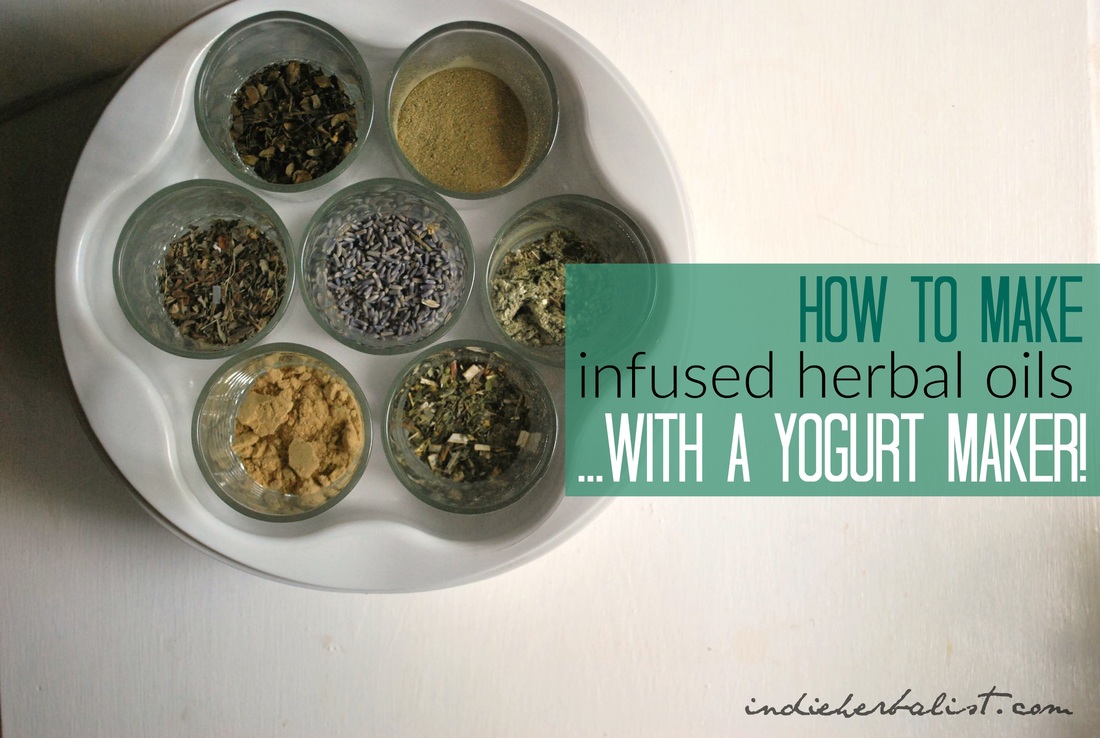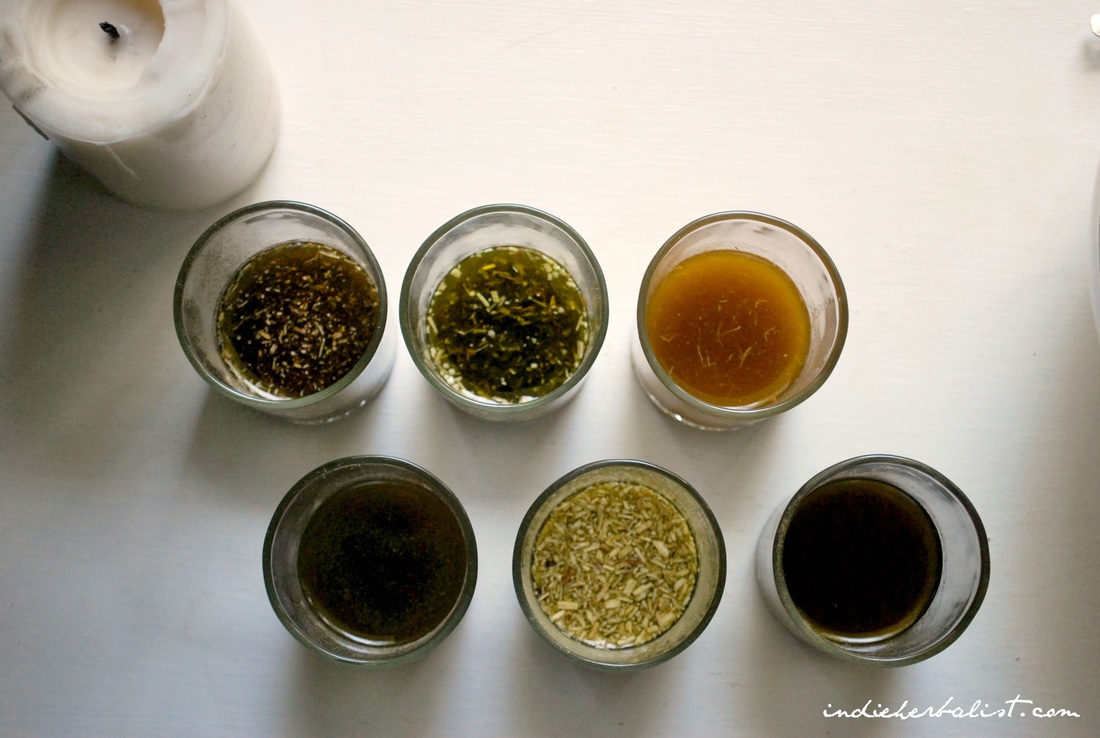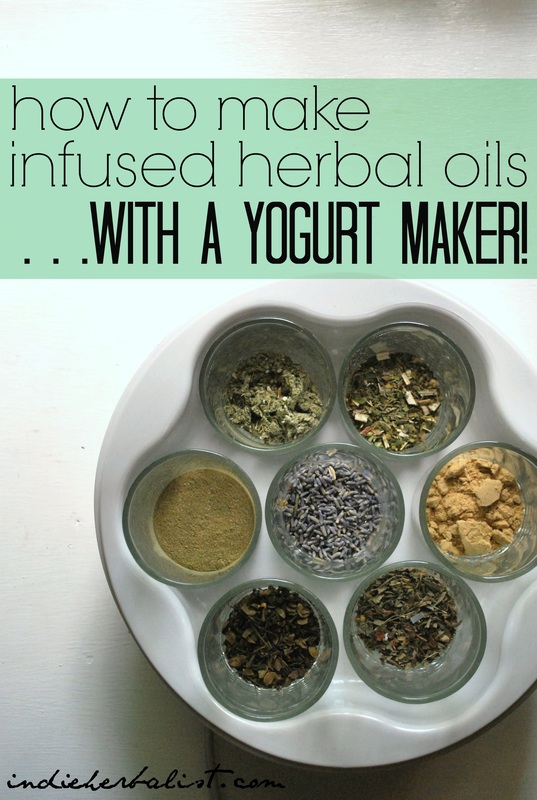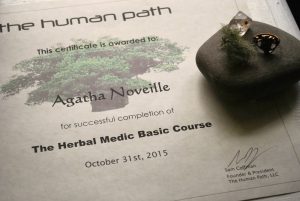Links contained in this post and elsewhere on my website may include affiliate links. When you make a purchase through these links, I earn a commission at no additional cost to you. I only link to products and services that I love - and that I think you will love, too!
Although herbal teas and extracts are some of the most versatile herbal preparations, infused herbal oils are also great to have on hand for topical use. Herbal salve making starts with making an infused oil. You can also make moisturizing body oils or massage oils with some herbs.
You can make infused herbal oils to use topically or as a salve base by allowing the herbs to infuse in your carrier oil at room temperature, but adding a little heat to the mix seems to help make the finished oil stronger and allows them to be finished more quickly.
Placing the herbs and oil into a mason jar and creating a double boiler with a slow cooker is one way to do this, but I like making small amounts of several different oils at once by using a yogurt maker.
Benefits of Using a Yogurt Maker
There are several benefits to using a yogurt machine to make your infused herbal oils. For one thing, yogurt jars are also the perfect size for making a few ounces of oil at a time so that you always have the freshest infused oils to work with.
It’s also a compact way to make several different herbal infused oils all at once so that you can experiment to find out which ones you like. The smaller quantity means you will have time to use them up before they go bad.
Then, too, I find that the yogurt maker takes up less space on the counter than my slow cooker, so I don’t really mind having it out for a week or so while I make my oils.
Unlike using a slow cooker, you don’t have to remember to put a towel in the bottom of the crock to keep the jars from clinking around when the water simmers (I always forget to do that!). Plus, it seemed that the water in my slow cooker would get much too hot for the gentle heat I wanted for my oils, even on the lowest setting.
My Process for Making Infused Herbal Oils
I start by powdering any herbs that need it with a coffee grinder. Herbs need to soften before the oil can draw out the good stuff. Powdering makes it easier for the heat and oil to get to work.
My recipe is 1 tablespoon of herb and 2 oz of oil per yogurt jar so that I don’t have to worry as much about sloshing oil on the counter when I open the jars to stir. If I want more than two ounces of finished oil, I make more than one yogurt cup with that herb instead of trying to add more oil and herb to a cup.
Yogurt makers aren’t designed to run continuously, so I plug mine in while I’m at home and unplug it when I’m gone. Read your manual to determine what the maximum estimated time for making a batch of yogurt is (usually something like 8-10hrs), and either place your appliance on a timer or remember to unplug it.
During the time your yogurt maker is unplugged, you can use some of the same tricks for incubating yogurt (like moving the oils into an insulated cooler with a hot water bottle or tossing a towel over them to help them stay warm). I don’t usually bother, and just let the oils hang out in the unplugged yogurt maker even if they return to room temp.
How Long Should Infused Herbal Oils Brew?
Tend your infused herbal oils for a few days or a few weeks, whichever you prefer. You will see lots of different opinions about the best length of time for making infused herbal oils, and I think it’s great to experiment for yourself to find what works best for you.
I like to have about seven total days that heat was applied for about eight hours each day. Solar infused oils (where the heat source is a sunny windowsill) usually sit for 4-6 weeks, and you’ll see infused herbal oils made with other forms of heat sit for anywhere from overnight to a few weeks.
In The Herbal Medicine Maker’s Handbook, James Green suggests about ten days of constant heat. I tend to follow my nose and keep an eye on what the oils look like to determine when they are ready, and for me that’s usually around the 7-10 day mark with this method, even though I’m not using constant heat. I might go as long as 14 days if I’m feeling patient or want an extra strong oil.
I don’t shake the jars of oil at any point in the process, although I do make sure to stir each one very well at the beginning and again every time they have cooled down. A stainless steel chopstick is perfect for this because there is less surface area than on a spoon (oily herbs sticking to your spoon is annoying and wastes a little each time you stir), and it’s easy to wipe clean in between jars.
What do you think?
Other than the plugging and unplugging, I find that this is a pretty low maintenance way to get the benefits of extra heat without the fiddly adjustments or long waiting time of some of the other methods. What’s your favorite way to make infused herbal oils? Leave a comment below with your best tips!
Read my DIY Guide to Radiant Health Using Herbs!






